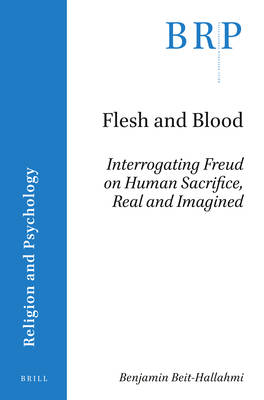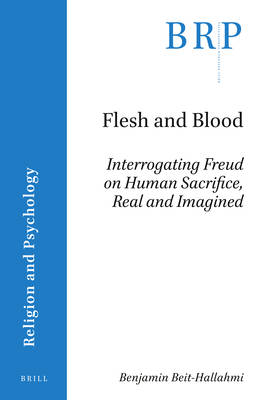
- Afhalen na 1 uur in een winkel met voorraad
- Gratis thuislevering in België vanaf € 30
- Ruim aanbod met 7 miljoen producten
- Afhalen na 1 uur in een winkel met voorraad
- Gratis thuislevering in België vanaf € 30
- Ruim aanbod met 7 miljoen producten
Zoeken
Flesh and Blood: Interrogating Freud on Human Sacrifice, Real and Imagined
Benjamin Beit-Hallahmi
€ 143,45
+ 286 punten
Omschrijving
Fears and stories about an underground religion devoted to Satan, which demands and carries out child sacrifice, appeared in the United States in the late twentieth century and became the subject of media reports supported by some mental health professionals. Examining these modern fantasies leads us back to ancient stories which in some cases believers consider the height of religious devotion.
Horrifying ideas about human sacrifice, child sacrifice, and the offering to the gods of a beloved only son by his father appear repeatedly in Western traditions, starting with the Greeks and the Hebrews. In Flesh and Blood: Interrogating Freud on Human Sacrifice, Real and Imagined, Beit-Hallahmi focuses on rituals of violence tied to religion, both imagined and real. The main focus of this work is the meaning of blood and ritual killing in the history of religion. The book examines the encounter with the idea of child sacrifice in the context of human hopes for salvation.
Horrifying ideas about human sacrifice, child sacrifice, and the offering to the gods of a beloved only son by his father appear repeatedly in Western traditions, starting with the Greeks and the Hebrews. In Flesh and Blood: Interrogating Freud on Human Sacrifice, Real and Imagined, Beit-Hallahmi focuses on rituals of violence tied to religion, both imagined and real. The main focus of this work is the meaning of blood and ritual killing in the history of religion. The book examines the encounter with the idea of child sacrifice in the context of human hopes for salvation.
Specificaties
Betrokkenen
- Auteur(s):
- Uitgeverij:
Inhoud
- Aantal bladzijden:
- 102
- Taal:
- Engels
- Reeks:
Eigenschappen
- Productcode (EAN):
- 9789004424791
- Verschijningsdatum:
- 12/12/2019
- Uitvoering:
- Paperback
- Formaat:
- Trade paperback (VS)
- Afmetingen:
- 150 mm x 231 mm
- Gewicht:
- 158 g

Alleen bij Standaard Boekhandel
+ 286 punten op je klantenkaart van Standaard Boekhandel
Beoordelingen
We publiceren alleen reviews die voldoen aan de voorwaarden voor reviews. Bekijk onze voorwaarden voor reviews.











